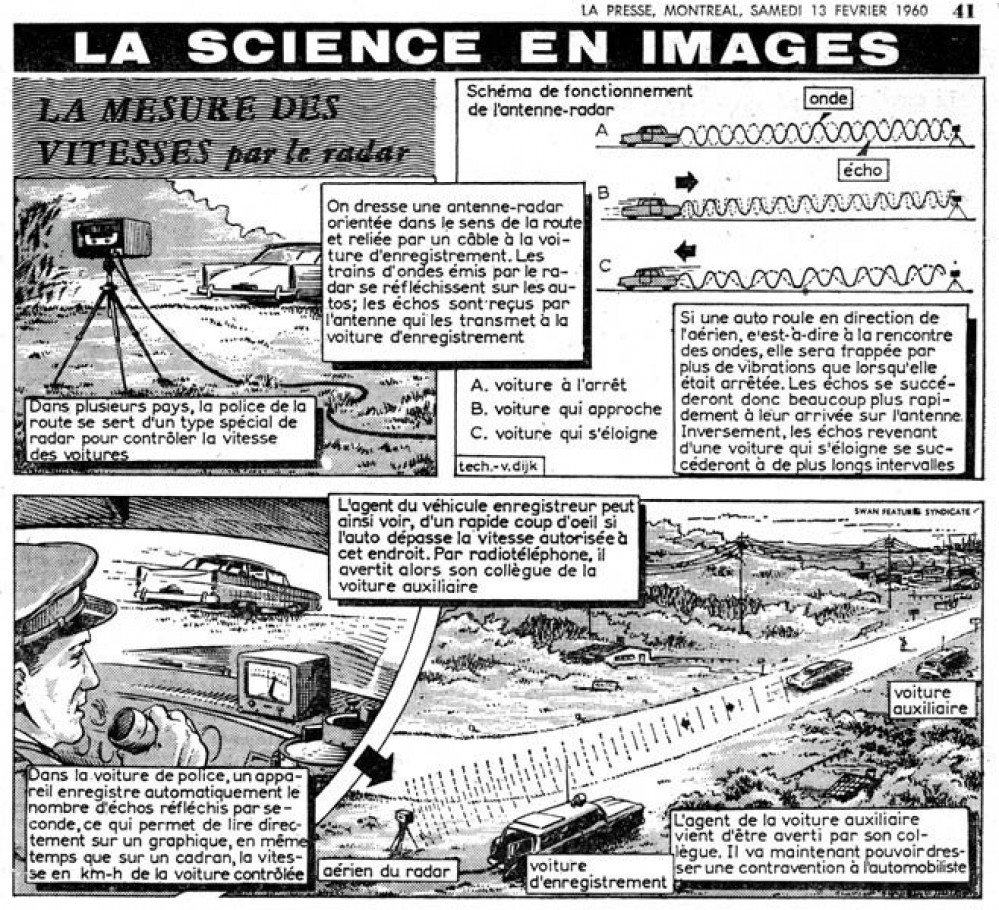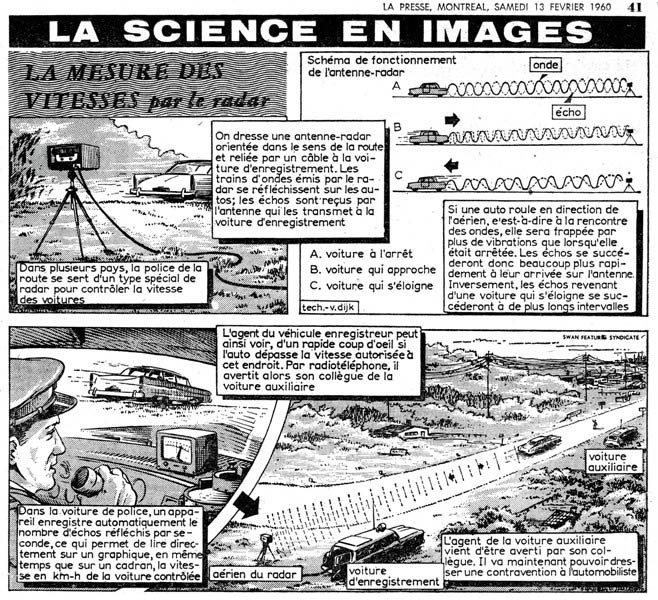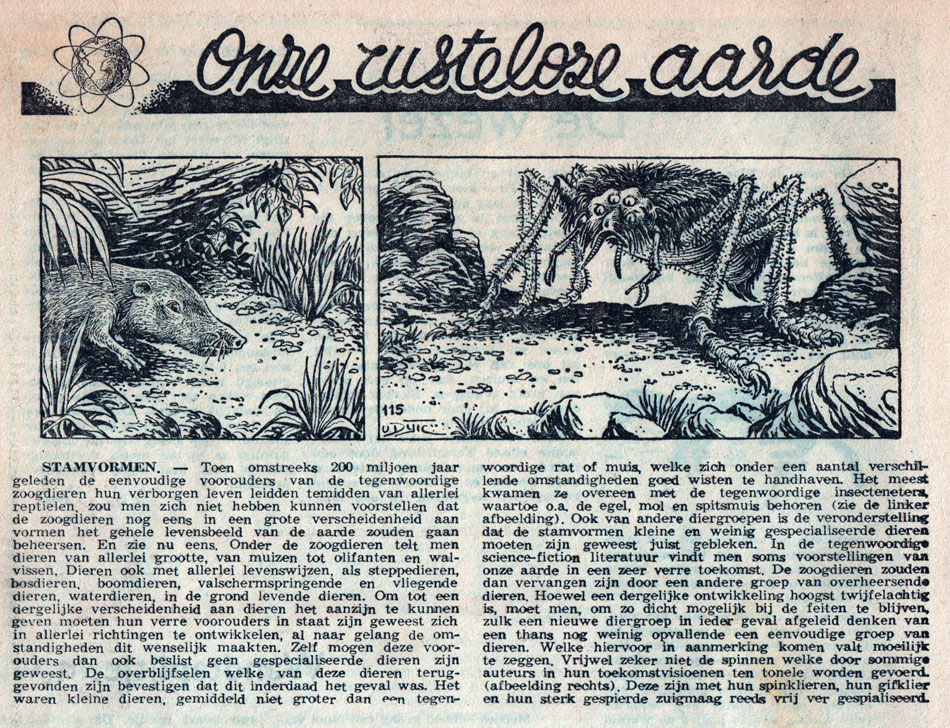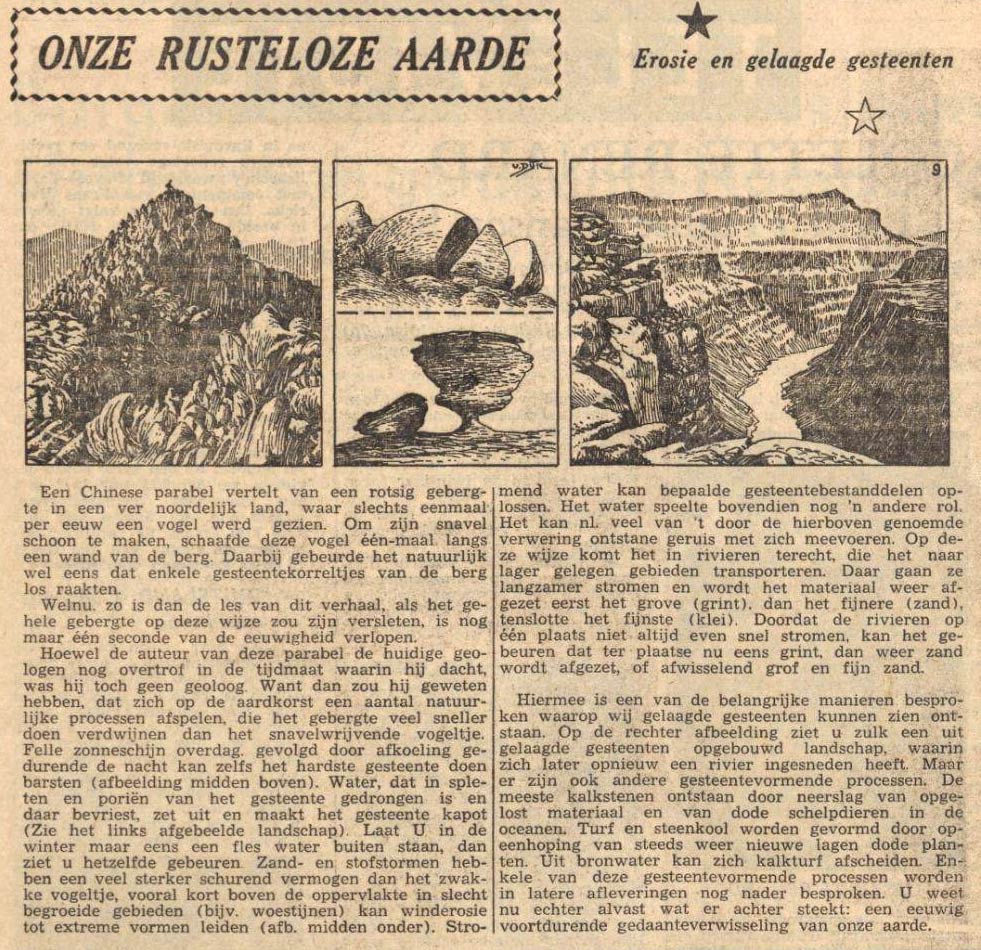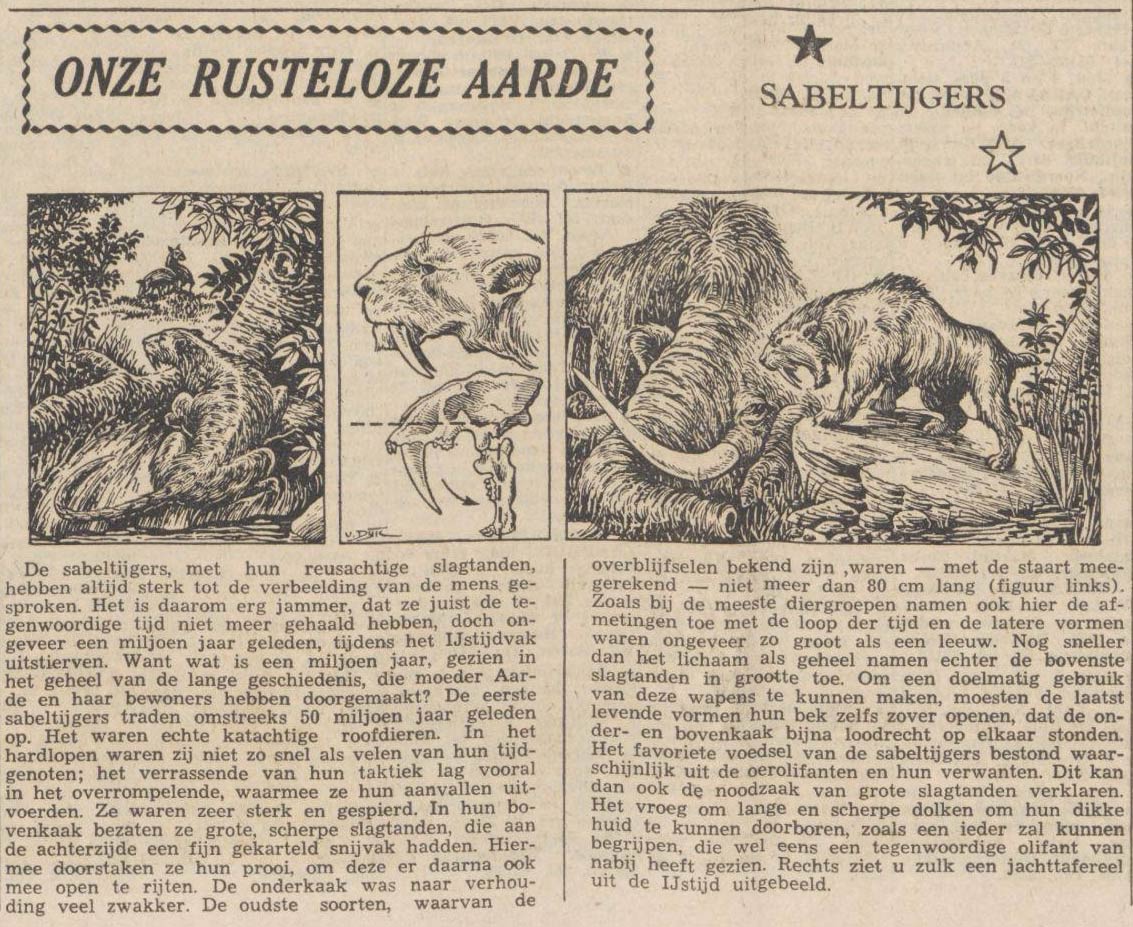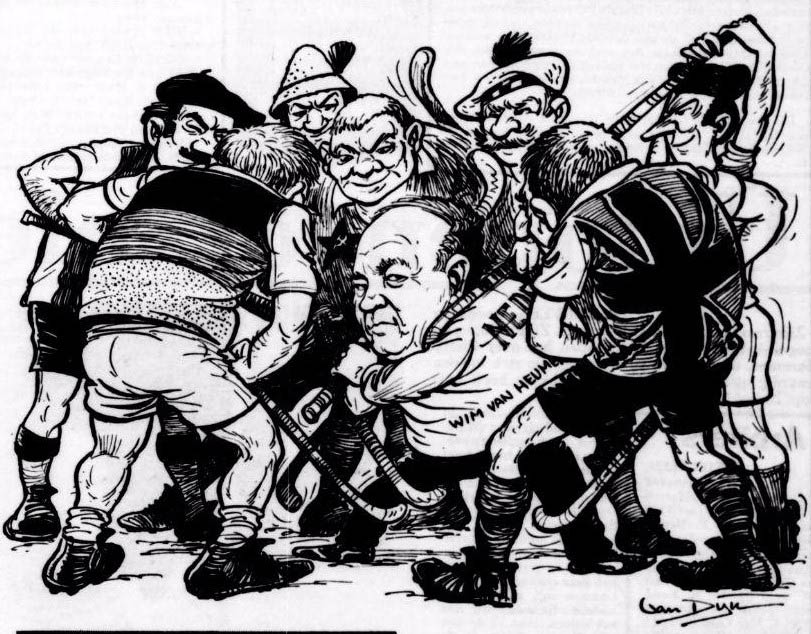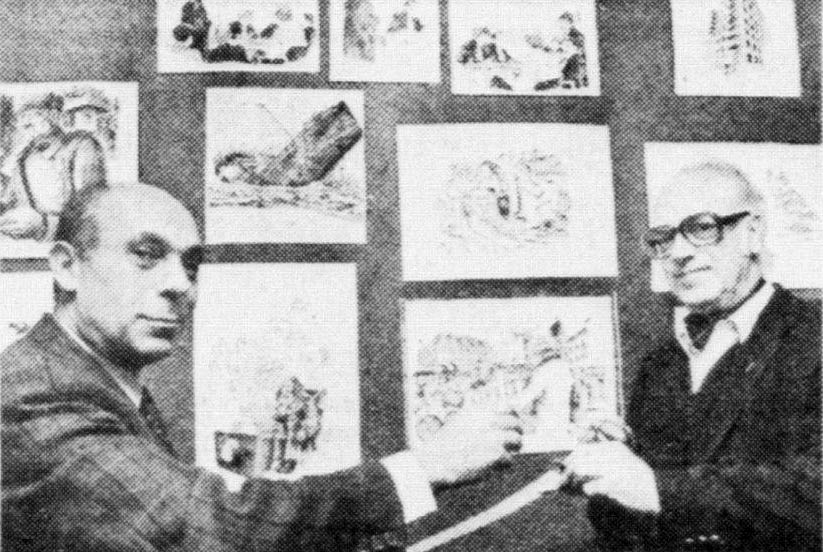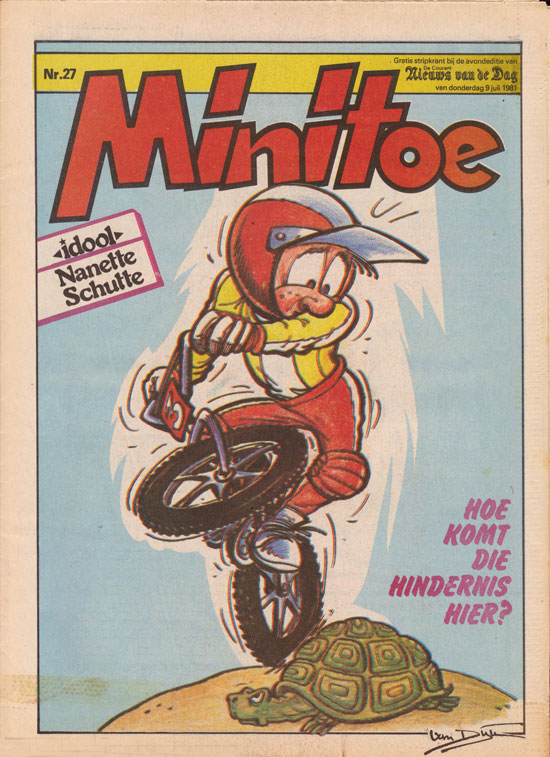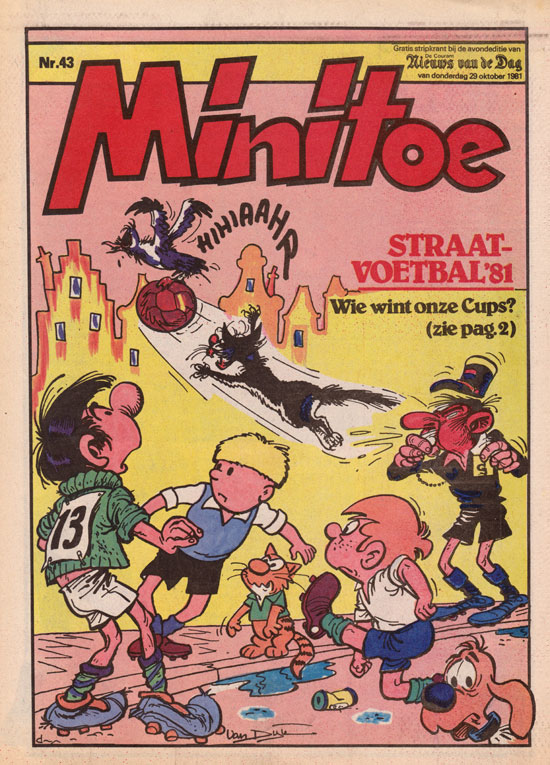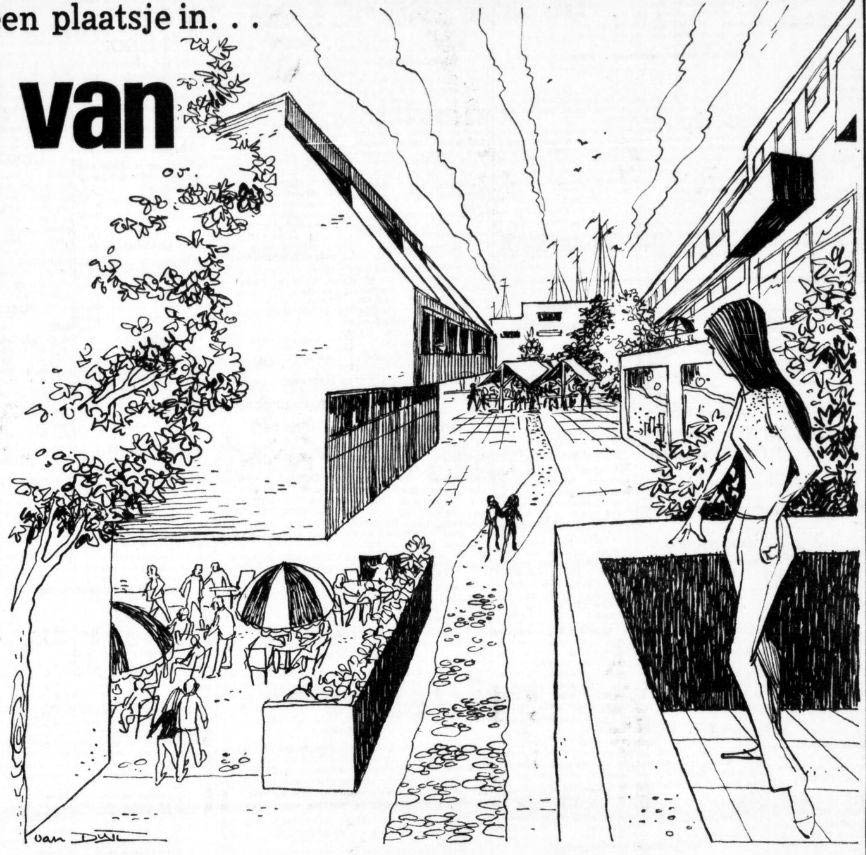French-language version of Van Dijk's comic series, printed in the Canadian newspaper La Presse, Montreal, 13 February 1960.
Johan van Dijk was a mid- to late-20th century Dutch illustrator. Throughout his long career, he made educational newspaper comics about a variety of subjects, regarding science, technology and nature. Originally running in regional papers, his features 'Onze Rusteloze Aarde' (1961-1964), 'Medemensen' (1963-1965) and 'Wonderen der Natuur', were also exported and translated all across the world. He was the house cartoonist for the Dutch newspaper De Telegraaf, specializing in scientific subjects like space travel.
'Onze Rusteloze Aarde' in 't Kapoentje #5, 30 January 1963.
Swan Features Syndicate
Johan van Dijk was born in 1927. Not much is known about his early years, but his association with Ton de Zwaan's Swan Features Syndicate seems to have started somewhere in the 1950s. Through De Zwaan, Van Dijk's JB illustrated features about subjects like police research and aviation were republished in overseas newspapers. The Quebec newspaper La Presse ran one of Van Dijk's series under the title 'La Science en Images' (1959-1960), and during the early 1960s this series also was published in the Flemish magazine 't Kapoentje. Specific episodes about aviation and space travel were collected in the book 'Hoe Werkt... Luchtvaart' (Nijgh & Van Ditmar, 1963). The drawings were accompanied by texts by model plane builder J.J. van Tol. Some of the strips carry Van Dijk's signature, others have "tech.-v. dijk" as a credit. The illustrator of the book is credited as "Joh. A. van Dijk".
Nieuwsblad van het Noorden, 30 December 1961 and 16 March 1963.
Educational features with A.A. Manten
During the 1960s, Van Dijk created a number of informational scientific newspaper features with the geologist and publicist A.A. Manten: 'Onze Rusteloze Aarde' (November 1961 - July 1964), 'Medemensen' (May 1963 - June 1965) and 'Wonderen der Natuur'. These dealt with subjects like the planetary system, the origin of life on earth, wildlife and water cycles, and ran in regional newspapers like Nieuwsblad van het Noorden and Utrechts Nieuwsblad.
Illustration about the European hockey championships in a special supplement of De Telegraaf on 17 August 1983. The man caricatured in the middle is Wim van Heumen.
De Telegraaf
In the second half of the 1960s, Van Dijk began his career with newspaper De Telegraaf and remained their house artist until his retirement in the late 1980s. He mostly illustrated the paper's larger news reports, applying an effective classic style with no artistic pretensions. He specialized in portraits with a touch of caricature and was also a whiz in complicated explanatory illustrations, in early infographics style. These included highly detailed drawings about space travel for the articles by scientific editor A. Huguenot van der Linden. After the moon landing on 20 July 1969, when NASA had not yet supplied photographs to the Dutch press for publication, a large drawing by Van Dijk appeared on the front page of De Telegraaf instead.
Johan van Dijk (right) exhibited his work in the Amsterdam-based barbershop of "Figaro Pasquale" in 1988 (De Telegraaf, 6 December 1988).
Van Dijk's articles evolved into in the books 'Eerste Maan-Dag' (1969) and 'Sprong Zonder Einde: Ruimtevaart Eergisteren en Overmorgen' (1969), published by the paper's publishing label, Teleboek. Johan van Dijk was one of the editors of the comics supplement Minitoe (1980-1981), which ran in De Telegraaf's less expensive regional paper Courant Nieuws van de Dag and featured reprints of foreign comics. He also illustrated covers for this supplement.
Cover illustrations for Minitoe issue #27 (9 July 1981) and #43 (29 October 1981). On the second cover, we recognize cameos from André Franquin's Gaston Lagaffe, his pet seaqull and cat and police officer Longtarin, Jef Nys' Jommeke, Raymond Macherot's Mirliton and Jean Roba's Boule et Bill.
Final years and death
In his later years, Johan van Dijk made designs and illustrations for carnival federations, including the Federation of European Carnival Cities (FECC). He passed away on 3 January 2008 at the age of 80.
Drawing for an article about the city of Almere (De Telegraaf, 27 September 1975).


